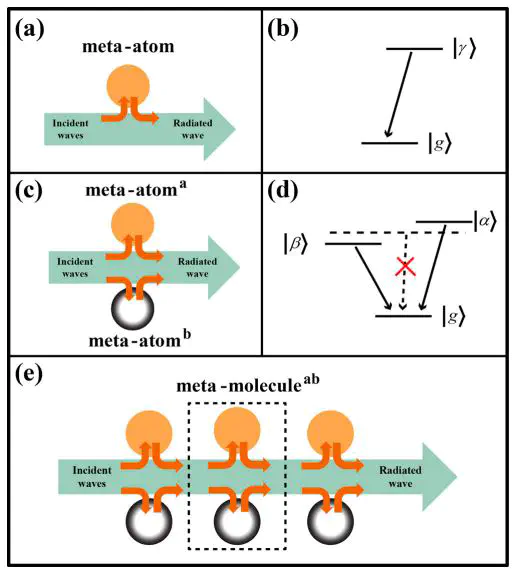
Abstract
In this paper, we demonstrate that the hybridization bandgap (HBG) can be tuned conveniently by deep subwavelength meta-molecules with in-unit interaction. Spontaneous-emission-cancellation-like (SEC-like) effect is realized in a meta-molecule by introducing the destructive interference of two detuned meta-atoms. The meta-atoms consisting of subwavelength zero-index-metamaterial-based resonators are side-coupled to a microstrip. Compared to conventional HBG configurations, the presence of in-unit interaction between meta-atoms provides more flexibility in tuning the bandgap properties, keeping the device volume almost unchanged. Both numerical simulations and microwave experiments confirm that the width, depth, and spectrum shape of HBG can be tuned by simply introducing SEC-like interaction into the meta-molecule. Due to these features, our design may be promising to be applied in microwave or optics communications systems with strict limitation of device volume and flexible bandgap properties.
Supplementary notes can be added here, including code, math, and images.